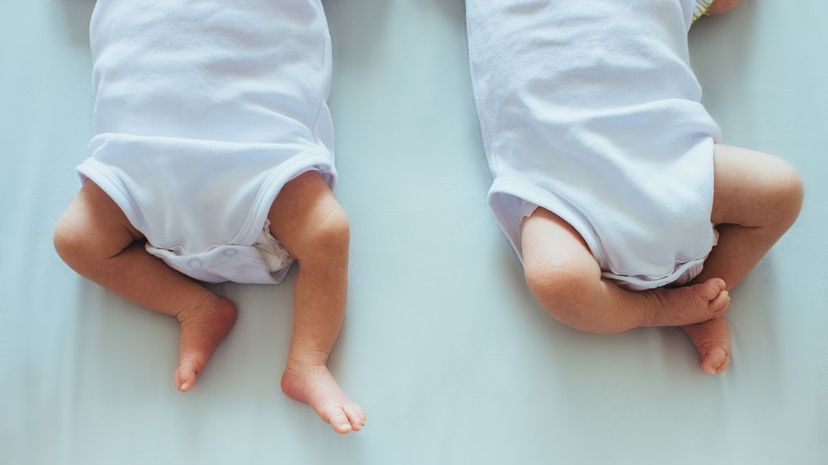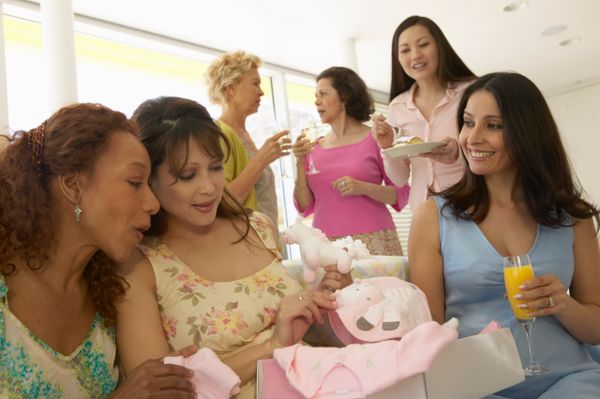
Finding out that you're carrying two or more babies at once can be a pretty huge shock under totally standard circumstances. Now, imagine that you're one of the very few cases of pregnancies involving multiple fetuses ... of different gestational ages.
Someone's got some splainin' to do.
Advertisement
That's right, it is possible, although (and this cannot be stressed enough) extremely rare to conceive a child while already pregnant. The phenomenon is known in medical circles as superfetation, and involves two different eggs, two different sperm and two different conception time frames. Only about 10 human cases have been investigated, so it's hard to put a firm time frame on just what constitutes separate gestational ages, but suspected superfetation does require two separate ovulation incidences, one of them after an initial pregnancy has already occurred.
The human body is designed to prevent superfetation from even being an issue. Once pregnant, a woman's reproductive system isn't supposed to continue sending out eggs. In fact, she's not supposed to ovulate more than one time per cycle. Multiple ovulation can happen in the same cycle, but that's when two eggs are released within the same 24-hour period, potentially resulting in the conception of fraternal twins.
This rarest of hiccups is why superfetation does sometimes occur, however. "There are a lot of mechanisms that don't make sense as to why this happens because fertility is a very time specific period," explains Dr. Robert Atlas, chair of the department of obstetrics and gynecology at Mercy Medical Center in Baltimore, Maryland. He notes that the presence of cervical mucus, which begins to block the cervix almost immediately after conception, is typically a major hindrance for follow-up sperm. "You only have 24, maybe 36 hours where the cervical mucus is thin where the sperm can penetrate and get into the uterus."
Despite the rarity in humans, the occurrence is common in certain animals, such as cats, panthers and badgers. Some animals even have multiple uteruses to accommodate the phenomenon. This is not the only way in which human pregnancies differentiate from other animals. We don't usually carry multiples, and even when we do they are considered high-risk."
During his 25 years in practice, Dr. Atlas has never encountered superfetation in action, nor is he likely to. But if he did, he'd probably draw that conclusion after exhaustively examining far more likely possibilities. "Many women are having ultrasounds early in pregnancy, so by being able to measure what's called the crown-rump length you can identify potential differences in those crown-rump lengths," he says. The crown-rump length measures a human fetus from the top of its head (crown) to the bottom of its buttocks (rump) and is used to determine a baby's gestational age. "When we see that [length difference] we're not necessarily thinking of this phenomenon; we're thinking of potential abnormalities in the one that's incredibly small."
Some experts are skeptical as to whether human superfetation is even a thing in the first place. Dr. Jim Betoni, maternal fetal medicine expert and creator of the app Pregnancy Power notes in an email, "Most authorities believe that alleged cases of human superfetation result from markedly unequal growth and development of twin fetuses with the same gestational age."
Indeed, fraternal twins of the same gestational age can vary greatly in size and general birth readiness. Chris and Marsha Prieto of Knightdale, North Carolina welcomed fraternal twin girls six years ago. "When I went into labor Baby B was obviously not ready in any way to come out," Marsha recalls. "Baby A came out normally like you would expect. Baby B had to be suctioned and pushed out," she says, adding, "She was not head down, she wasn't even in the birth canal. She was still all the way up under my chest." Ironically, Baby B wound up boasting a birth weight of 5 pounds, 5 ounces (2.4 kilograms), compared with her sister's 4 pounds, 10 ounces (2.1 kilograms).
The Prieto twins were born healthy. And while the risk of premature birth remains real, fortunately, modern cases of suspected superfetation seem to have come up roses. "Risks relate mainly to the fact that the embryos are in different stages of development within the same uterus," explains research scientist Dr. Steven Hausman in an email. "This can lead to one of the resultant babies being born prematurely, but in the cases that have been reported, all of the babies seem to end up thriving once the prematurity has been recognized and treated appropriately."
Advertisement


